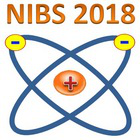Speaker
Mr
Iaroslav Morgal
(CEA Cadarache, IRFM / Aix-Marseille Universite)
Description
The Cybele negative ion source is designed and operated at the IRFM in CEA Cadarache for the development of the future NBI system SIPHORE for future fusion reactors [1]. The main objective is to create a thin and tall (blade-like) negative ion beam (H-,D-), which will be neutralized by the laser photodetachment. For this purpose Cybele has an aspect ratio (1.2 m high *0.15 m wide) which is directed to the creation of a dense and homogeneous magnetized plasma column in order to produce and extract negative ions on the side edge along the main axis.
In 2011, IRFM started a collaboration with EPFL Lausanne for the development of a bird-cage type Helicon antenna on the RAID testbed dedicated to the Cybele source. The RAID testbed is equipped with a set of coils (40cm diameter) outside the vacuum chamber to generate an axial magnetic field. The helicon plasma column obtained on RAID exhibits very promising characteristics [2] for its application on Cybele. It is an ideal configuration for the propagation of the helicon waves in the plasma but this closed magnetic confinement is not suitable for the implantation on the plasma edge of extraction and acceleration systems.
In 2017 a similar Helicon antenna was installed in the top of the Cybele source to study the negative ion extraction from the helicon magnetized plasma column.
For this purpose, the first step of this study is focused on the exploration of different magnetic confinement of the plasma column which should be compatible both with the propagation of the helicon waves in the Cybele plasma column and the beam extraction.
Two magnetic field configurations are under investigation: the first one is based on two lateral coils sitting on opposite sides of an iron rectangular frame which surrounds the source; the second one is based on a set of 11 coils implemented within the source volume under vacuum. Plasma diagnostics by Langmuir probes allow the characterize the plasma parameters under these two different configurations. The experimental results and the comparison between these two configurations will be presented.
Primary author
Mr
Iaroslav Morgal
(CEA Cadarache, IRFM / Aix-Marseille Universite)
Co-authors
Dr
Alain Simonin
(CEA-Cadarache, IRFM)
Mr
Christian Grand
(CEA-Cadarache, IRFM)
Dr
Gilles Cartry
(Aix-Marseille Universite, PIIM)
Dr
Hubert P.L. de Esch
(CEA-Cadarache, IRFM)
Dr
Kamal M. Ahmed
(Plasma and Nuclear Fusion Dept.- Nuclear Research Center- Atomic Energy Authority, Cairo, Egypt)
Dr
Stephane Bechu
(LPSC, Universite Grenoble-Alpes)

